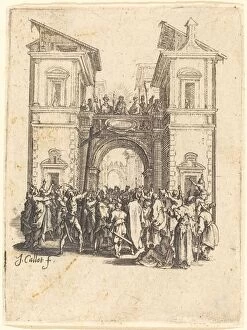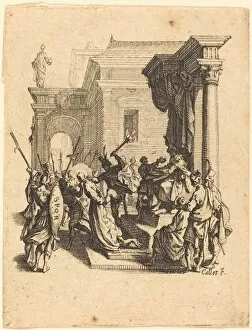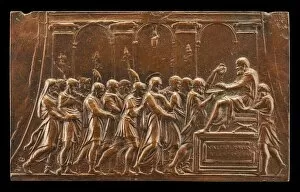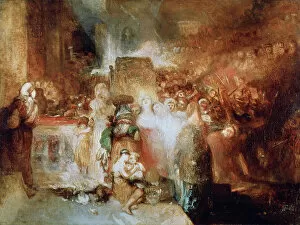Governor Of Judea Collection
"The Governor of Judea: A Glimpse into the Life and Trials of Pontius Pilate" Step back in time with us as we explore the captivating world of Pontius Pilate
For sale as Licensed Images
Choose your image, Select your licence and Download the media
"The Governor of Judea: A Glimpse into the Life and Trials of Pontius Pilate" Step back in time with us as we explore the captivating world of Pontius Pilate, the Governor of Judea during the first century AD. Through a series of remarkable artworks by renowned artist Jacques Callot and others, we are transported to pivotal moments in history that revolve around this enigmatic figure. In "Ecce Homo, " created in 1631 by Jacques Callot, we witness Pilate's fateful encounter with Jesus Christ. The painting captures the intensity on Pilate's face as he presents Jesus to the crowd, torn between his own doubts and their demands for crucifixion. Similarly, "The Condemnation to Death" from 1618 portrays Pilate grappling with his decision while facing immense pressure from both sides. Callot's "Christ before Pilate" (1631) takes us deeper into this complex character's psyche. We see him wrestling with guilt and responsibility as he attempts to wash his hands clean of any involvement in Jesus' fate. Meanwhile, another artwork titled "Christ Condemned to Death by Pilate" (1624/1625) showcases a somber moment when judgment is passed upon an innocent man. Valerio Belli's depiction titled "Christ Brought Before Pontius Pilate" offers yet another perspective on this historical event. Created during an unknown period but still resonating deeply, it invites contemplation about how different artists interpreted these crucial moments. Moving beyond Callot’s works, we encounter other notable pieces such as "Pilate Washing His Hands" (1830) by JMW Turner. This evocative painting captures a sense of turmoil within Pilate as he futilely tries to absolve himself from blame through symbolic gestures. These artworks collectively shed light on Pontius Pilate’s role in one of history’s most significant events.










